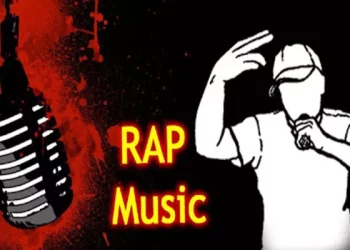Rap music, a vibrant and influential genre, has its roots deeply embedded in the cultural and social fabric of the United States, particularly within African-American communities.
The origins of rap can be traced back to the early 1970s in the Bronx, New York City, where it emerged as part of a broader cultural movement known as hip-hop. This article explores the historical context, key figures, and cultural influences that contributed to the birth and evolution of rap music.
Historical Context
The Cultural Landscape of the Bronx
In the late 1960s and early 1970s, the Bronx was characterized by economic decline, urban decay, and significant social challenges. Predominantly African-American and Puerto Rican populations faced systemic inequalities, which fueled a desire for expression and identity. Amidst this backdrop, young people began to gather in parks and community centers for block parties, where music became a means of escape and expression.
The Influence of African Oral Traditions
The roots of rap can be traced back to ancient African traditions, particularly the griot culture. Griots were storytellers who used rhythmic speech to convey history, culture, and social commentary.
This oral tradition laid the groundwork for the narrative style found in rap today. As African slaves were brought to America, they carried these traditions with them, which evolved over time into various forms of musical expression.
SEE ALSO: Who Is The Texas Country Artist for 2024?
Key Influences on Rap Music
Musical Precursors
Rap music did not emerge in isolation; it was influenced by several musical genres:
Blues: The blues genre played a significant role in shaping rap. It incorporated storytelling through song and often addressed themes of hardship and resilience.
Jazz: Jazz musicians experimented with rhythm and improvisation, elements that would later become integral to rap.
Funk: Funk music’s emphasis on rhythm and groove provided a foundation for the beats used in early rap songs.
Spoken Word Poetry
The spoken word movement of the 1960s also significantly influenced rap. Artists like Gil Scott-Heron and The Last Poets combined poetry with music to address social issues.
Their performances often included rhythmic speech patterns similar to those found in modern rap.
The Birth of Rap
DJ Kool Herc: The Pioneer
The emergence of rap as a distinct genre is credited to DJ Kool Herc (Clive Campbell), a Jamaican immigrant who began hosting block parties in the Bronx. In 1973, Herc introduced a technique called “breakbeat,” where he extended instrumental sections of funk records to keep people dancing longer. This innovation allowed MCs (Masters of Ceremonies) to engage with the crowd through rhythmic speech.
Herc’s use of two turntables enabled him to create seamless transitions between tracks, leading to an extended playtime that became characteristic of hip-hop events. His parties became legendary, drawing large crowds and setting the stage for what would become a cultural phenomenon.
Coke La Rock: The First MC
Coke La Rock is often recognized as one of the first MCs in hip-hop history. He collaborated with Kool Herc at his parties, delivering rhymes that engaged the audience. La Rock’s style involved playful banter and call-and-response interactions with partygoers, which are hallmarks of modern rap performances.
Evolution of Rap Music
From Block Parties to Mainstream Success
As the 1970s progressed, rap began to gain traction beyond local parties. In 1979, the Sugarhill Gang released “Rapper’s Delight,” which became one of the first rap songs to achieve commercial success. This track introduced rap to a wider audience and marked a turning point for the genre.
The Golden Age of Rap
The mid-1980s through the early 1990s is often referred to as the “Golden Age” of hip-hop. During this period, artists began to explore more complex lyrical themes and diverse styles:
Public Enemy: Known for their politically charged lyrics addressing social injustices.
Run-D.M.C.: Helped bridge rock music with hip-hop.
A Tribe Called Quest: Pioneered alternative hip-hop with jazz influences.
This era saw an explosion of creativity as artists used their platforms to comment on societal issues such as racism, poverty, and violence.
Cultural Impact
Hip-Hop as a Movement
Rap music is not just a musical genre; it is part of a larger cultural movement known as hip-hop. This movement encompasses four key elements:
MCing/Rapping: The vocal delivery style that defines rap music.
DJing: The art of mixing tracks and creating beats.
Breakdancing: A dynamic dance style associated with hip-hop culture.
Graffiti Art: Visual art that expresses identity and social commentary.
Together, these elements form a rich tapestry that reflects the experiences and struggles of marginalized communities.
Global Influence
As rap continued to evolve throughout the 1990s and into the 21st century, it transcended borders and became a global phenomenon. Artists from various countries began incorporating local languages and cultural references into their rap music while maintaining its core elements.
Conclusion
Rap music originated from a unique confluence of cultural influences rooted in African oral traditions, blues, jazz, funk, and spoken word poetry. Emerging from the Bronx in the early 1970s amidst social challenges, it quickly evolved from block parties into a powerful form of expression that resonates globally today. With pioneers like DJ Kool Herc and Coke La Rock leading the way, rap has become an enduring voice for marginalized communities while influencing countless artists across genres worldwide.
Related topics:



























